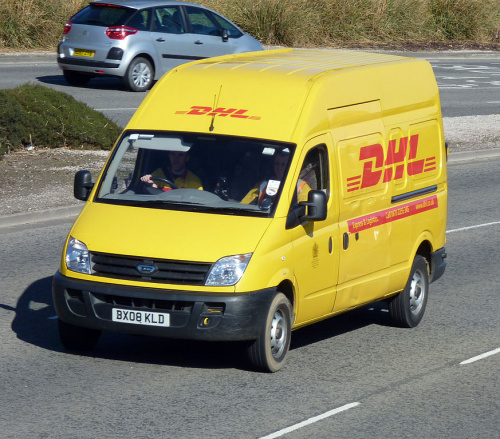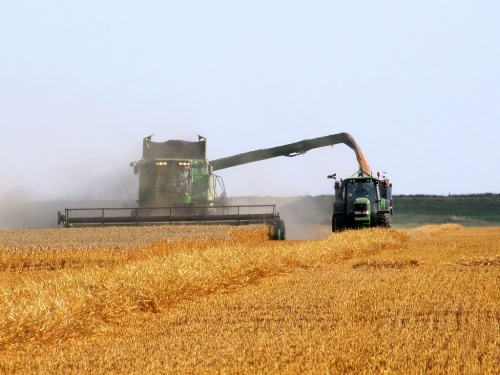When I think Internet of Things (IoT), the first image that pops into my head is the "smart, internet-connected home of the future," complete with high-end tech gadgets like learning thermostats and remote-controlled light bulbs that respond to voice commands from a different device. All this, of course, comes at a price of decreased privacy and increased network attack vectors (not to mention actually handing over hard-earned dollars to pay for all these widgets). It seems that the benefit-to-cost ratio is not quite high enough for most consumers to readily adopt much of this new technology.
However, if you type "IoT" into Google, you'll see an endless stream of news stories about how IoT is revolutionizing the world, how there will be [insert absurdly large number] of connected devices by 2020, and how it will be a multibillion-dollar industry that's ripe for tech companies. Since home automation adoption appears to be slow, where is all this rapid development coming from?
Beyond the Home
As it turns out, the "Smart Home" is only a fraction of what's considered "IoT." Even though it's more than a year old, this report from Business Insider predicts that the majority of IoT endpoints will be used by governments and businesses, not consumers.
In the rest of this article, we'll take a look at some of the industries that are benefiting the most: transportation, manufacturing, health, government, and agriculture.
Transportation
Self-driving cars are all the rage right now, but many transportation companies are beginning to adopt IoT technology in their vehicles. Much of this technology focuses on identifying safety and maintenance issues early, but the companies have seen real savings as a result.
DHL is beginning to research and integrate IoT. Image source: Wikimedia Commons
Shipping giant DHL has begun researching ways IoT can improve shipping and logistics. This includes things like inventory management, automatically scanning pallets for damage, real-time updates to inventory, fleet tracking, and maintenance alerts.
Currently, General Electric is working with AirAsia to add sensors in many of its airplane engines to track performance and efficiency. These sensors, along with GE's "Flight Efficiency Services" software, have helped save AirAsia a reported $30--50 million over the past five years.
Manufacturing and Construction
Broadly labeled as "Industrial IoT," "Industry 4.0," or "Smart Factory," IoT applications are gaining popularity in manufacturing along with other advancements like robotics. Most of these applications include remote monitoring systems that can add up to millions of dollars in savings if potential problems are caught and fixed before they become catastrophic.
For example, Caterpillar contracted Accenture to build monitoring systems for their construction vehicles. These systems help end customers improve efficiency and increase safety.
Even beer brewers and distributors are jumping on board. B. United International is using various sensors to monitor the location, temperature, and pressure of beer as it is shipped around the world. B. United specializes in distributing craft beer, which is often considered harder to transport due to a natural refermentation process that can occur.
Health
Wearables is often first to mind when we think about IoT as it relates to our health. However, several companies, such as STANLEY Healthcare, are focusing on provided connected and more efficient hospitals, which includes in-building patient and equipment tracking.
Qualcomm and Philips are also working on a set of connected devices that incorporates medication dispensers, biosensors, and glucose meters.
Public Sector
Many IoT devices are finding a home in new developments for "Smart Cities." The town of Tidworth, England, worked with water company Veolia to install sensors all along its water main and sewer system to more quickly notify workers of problems.
Barcelona overview. Image courtesy of Bert Kaufmann on Flickr
Barcelona is now considered to be an IoT leader, complete with discreet sensors placed around the city to monitor "noise, traffic, pollution, crowds, even the number of selfies posted from the street" according to a Forbes interview.
Agriculture
John Deere has created what it calls the Field Connect system, which allows farmers to monitor everything from soil moisture to humidity to solar radiation. This data can be easily accessed through a web interface and can help farmers improve yield and crop quality.
John Deere combine and tractor. Image source: Wikimedia Commons.
Similarly, Bosch is creating sensors to assist farmers in monitoring crop growth. Specifically, they recently tackled monitoring ground temperatures for asparagus, which are supposed to be quite sensitive to variations in soil temperature.
What Next?
In the coming years, we will continue to see more and more connected devices enter the market to assist industries we may never see nor hear about. Some of you may work in these industries or for companies that supply IoT solutions. For others, I hope that this helped shed some light on another piece of what constitutes "Internet of Things."
If you are developing a product or service using IoT, I urge you to look beyond the home for customers in other potential markets.
What are your thoughts on IoT in these markets? Do the benefits outweigh the costs in your opinion? Let us know in the Comments below!











There are two significant problems with IoT that have yet to be resolved - security and standardization (including interoperability). In addition, more work needs to be done in terms of retrofit and power management. To be honest I see a huge amount of sloppy design work in IoT and we have some distance to go before it becomes truly indispensable. As for smart phones, I am staggered that no-one has realized what they could do... yet. Just wish I could afford to patent the obvious misses!
I agree that standardization and security are extremely important issues, but I don't think they will stop most people (and companies) from adopting things right now (which, of course, will likely have consequences down the road). There is good news on the standardization front, though: it looks like the AllSeen Alliance and Open Interconnect Consortium (two associations of some of the biggest tech companies working to create IoT/M2M standards) merged to create the Open Connectivity Foundation. There's also promise of IEEE p2413 being finished this year, which is an IEEE standard around IoT messaging and security.
Could not agree more. Those awaiting the one protocol to rule them all will get used to waiting. The use cases vary so widely, especially in Industrial IoT, that a single standard would be an awkward compromise. Instead, look for a heterogeneous set of protocols, some of which interoperate in the cases where they need to. Security is quite important, however waiting for it to be "resolved" again means waiting forever. I think of it more as an arms race--to win you need to implement continuous improvements that stay ahead of (most) attacks. None of this excuses sloppy work or careless protocol selection! It just means that you needn't wait for IoT perfection to get your hands dirty.
I'm no expert, but it seems security and standardization work against each other in this instance. That is part of why I love DIY electronics; I can tailor them my needs and they become insignificant and obscure for anyone else to hack. I'm sure there are others with applications that require better security, but it works for me.
No, they don't. First, anytime you use the "security through obscurity" mindset you have no security. Secondly, one of the things which will be standardized is proper security practices and technologies (meaning good, widely peer-reviewed encryption methods, and the correct means of implementing that encryption). This means that greater standardization will lead to greater security.
Security is hard, so having a large consortium create the gold standard and ensuring that all device manufacturers follow that standard will increase the security of the whole system. A fractured archipelago of hacked-together solutions creates a system with tremendous weaknesses at all points.
You missed a category: Building Management Systems. Around the US there are probably 50,000 or more buildings with HVAC, lighting, security, etc controlled by BMSs. With careful attention to the gigabytes of data that come from such an installation, a building owner can tune their building to use considerably less energy and detect maintenance problems before they get to the point that a system comes down. Companies are already saving millions of dollars on energy and maintenance with BMSs and it will only get better as the cost of BMSs for smaller buildings come down in price and monitor even more aspects of a building. Eventually, this sort of thing will trickle down to the residential markets, especially for new construction.
I was kinda bundling that up in "construction," even if it's not new construction. But yes, that is definitely another great example of where businesses will be able to benefit from IoT.